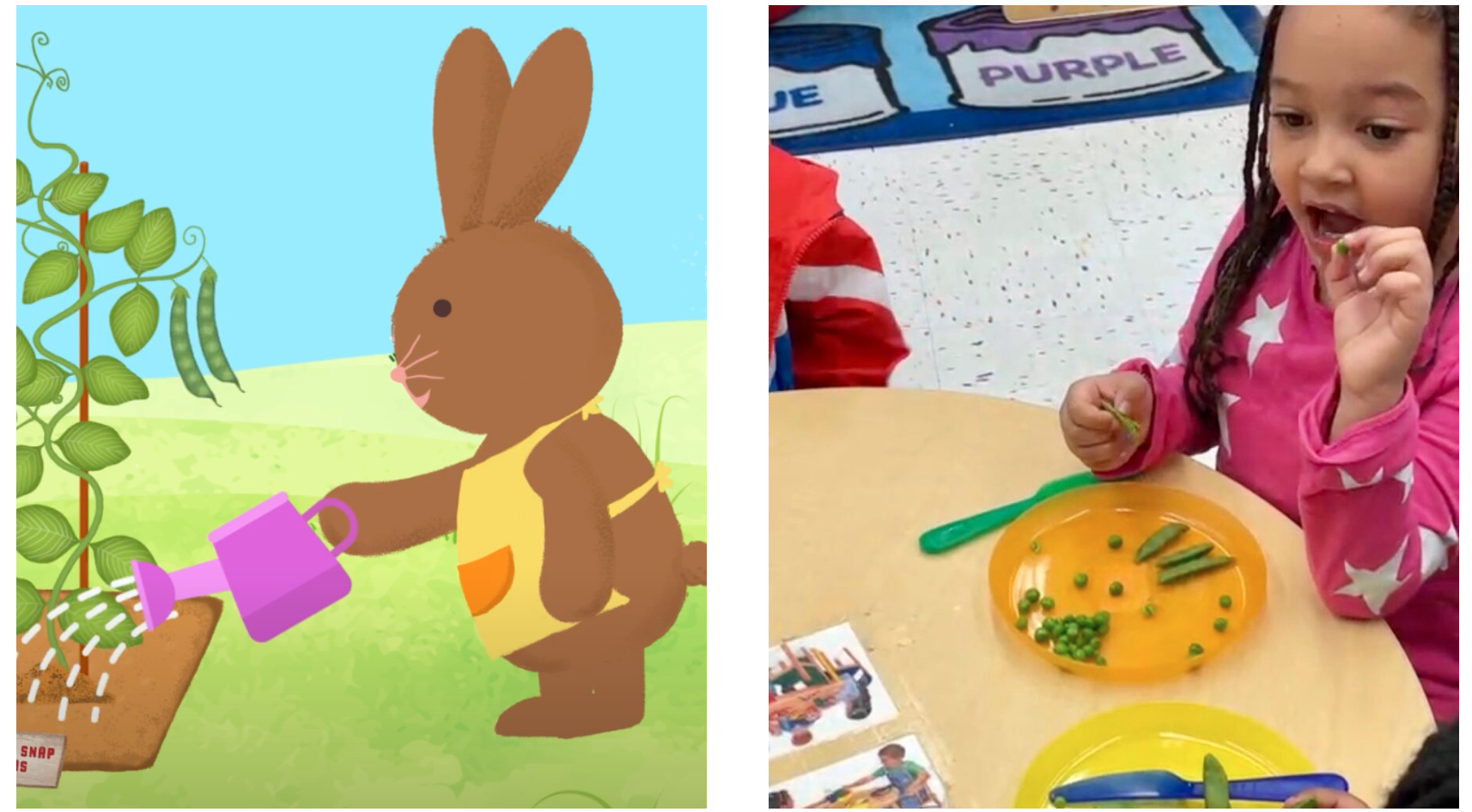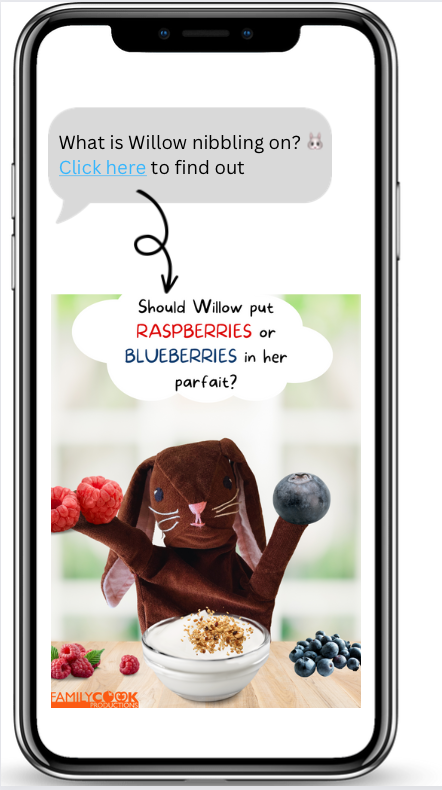Planting the Seeds of Healthy Habits With Digital Communication Channels

As parents and educators, we all want to encourage our children to develop healthy habits that span across their physical, emotional and social well-being. It’s no secret that digital channels play a large role in how young minds think and grow; but did you know it can also be an incredible tool for implementing positive behavior changes?
When it comes to Teaching Kitchen programs, the common goal is to introduce new skills to jump-start a love of cooking that can lead to lasting lifestyle changes. Yet, we all know how difficult this is to achieve and measure. For more than 25 years, FamilyCook Productions has strategically embraced advances in technology to reinforce our program goals, boost efficacy and help measure success.
And we are constantly looking for ways to support our kids in growing healthy habits. Digital communication often gets a bad rap in the early education world. We think of it as something that springs forth with struggles over instant messaging and screen time limits. But what if incorporating digital communication channels into our children’s lives could actually lead to positive outcomes? In this blog post, we’ll explore how FamilyCook Productions is integrating these channels into healthy practices to help children and their families form stronger connections with their own wellbeing and even reduce anxiety levels when used correctly.
Thanks to funding from Robin Hood Foundation’s Fuel for Fifty early childhood initiative, we have the resources to explore the extension of technology into new areas for parents with very young children. In collaboration with BronxWorks, we have brought these elements of our evidence-based Nibble with Willow program into hundreds of Head Start families’ kitchens.
Each week, parents receive an automated text message the evening before the “Willow Wednesday” puppetry and cooking lessons their children enjoy at school. The text message uses a reinforcing visual cue with an adorable photo of our beloved bunny character, Willow. In the photos, Willow may be found hiding behind some asparagus, juggling peas or nibbling on a cucumber. Each message underpins the Willow program goals and is delivered just as the dinner hour begins. It serves as a time sensitive reminder to parents to maximize Willow’s message by engaging their children in conversation about shopping for and preparing meals using fresh, seasonal ingredients. Timing is everything!

But our use of digital content channels does not end there. Today’s toddlers are watching content designed precisely for them on YouTube using their parents phones or tablets. Mostly educational, such content is without a doubt a way for busy parents to entertain youngsters while they go about household chores, including serving meals. Yet too often, children eat separately, while parents eat something entirely different later on.
We are working to address this challenge and align with our long-time effort to change the status quo of kids’ food. The essential message of Willow surrounds the family meal, prepared with participation of ‘little kitchen helpers’ and enjoyed sitting together. Turning once again to digital channels, FamilyCook has just released our first Willow animated short in a new video series. “Willow’s Spring Adventure” follows the discovery of our Willow bunny character as spring emerges and she plants her vegetable garden.
As Willow’s peas and cucumbers become ready to eat, the children are encouraged to call on an adult to pause the video, gather ingredients and make the simple Snap Pea and Mint recipe — together! As the children have been making the recipe in their childcare, they are primed to want to make and eat it. Likewise, as adults have witnessed in-person Willow sessions and events, they too are familiar with how to engage their children to be hands-on with fresh food that in turn leads to children’s willingness to eat it.

Breaking through busy lifestyles and routines is possible through creative content for a while. However, as stress and perceived time constraints pile on, the best intentions can fall by the wayside before they can become ingrained lifestyle changes. Now, using digital communication and content channels, the ‘pester power’ of young children will carry the opportunity to bring the Willow program’s success over the finish line.
Too often we overlook digital channels as tools that can help us nurture healthy attitudes in ourselves and others, especially children. It’s time we consider ways to empower our children and students with digital knowledge and reinforce this messaging so they can foster better habits now and into their future.

